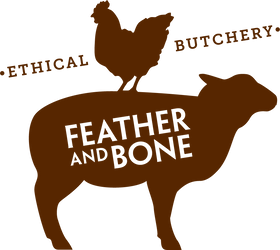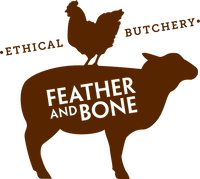Where, oh where, did the offal go?
First published in the Feather and Bone newsletter, 26 March 2013
Clara Bateman is the owner and farmer of South Hill Wildes Meadow farm near Mossvale in NSW. South Hill run a small herd of Black Angus cows and we’ve been buying their cows and vealers for five years.Clara recently told us she’d decided to tackle the vexed question of disappearing offal and was headed over to Wollondilly on a fact-finding mission. We asked her to write us a report that we could share with you so below is the wonderful piece she sent us.
WHERE, OH WHERE, DID THE OFFAL GO?
"The vealer bodies arrived this morning, great condition, but no offal, AGAIN”, said Grant, in a despairing tone.
This has been a conversation he and I have had, more times than I care to recall, over the past five years that South Hill, Wildes Meadow has been supplying our produce to Feather and Bone. It is incredibly frustrating for him, the provedore, and even more frustrating for the breeder and producer to know that some of the body parts of an animal which you have so carefully raised, which should be available for human consumption, are just being trashed. So I rang Wollondilly abattoir, not for the first time, to make a serious complaint, and was invited by Ray Weir, the manager, to come and follow my next kill through, from the pens where the animals are held prior to slaughter, to the chiller room where the bodies are hung for 24 hours till they are picked up by the meat carters to go to their various destinations.
On arrival at 6.15am, Tuesday 19th March, Ray gave me a fetching blue net hat to wear and away we went. Explaining, as we walked, about his frustrations over the whole issue of non-delivered offal, which he said generated more complaints than anything else the abattoir did.
“Once it goes into the chiller room, it’s out of our hands, “ he said. “We do everything possible on the floor to ensure that the offal is correctly marked and, providing that it passes the meat inspection - and a lot doesn’t, it will be hung up in the chiller for the carters to take when they pick up through the night.” And certainly from what I observed, standing watching the men working on the abattoir chain, the system is very thorough.
It has to be because once the animal has been killed and skinned, the meat inspector, the king pin in the abattoir, examines the whole body, VERY CAREFULLY, while the paunch and intestines are being removed. At any time the inspector can condemn the whole body. Then the animal’s lungs, oesophagus, spleen, heart and liver are thrown onto a special inspection table where they are minutely examined by the inspector.
The first cow coming through on the chain had her liver condemned, almost without a second glance… “ Liver Fluke,” Ray muttered in my ear. “That won’t be a problem for me,“ I said. “I tested all my herd last year and my property is completely fluke-free”. Apparently the lungs and spleen are examined to check for Bovine Johne’s Disease, a very serious bacterial disease, and a positive finding would mean the whole animal being condemned and the property from which it came being quarantined until it was cleared.
Then came my three vealer calves. It was hard looking at them and knowing that only yesterday they had been in the paddock with their mum. But I always console myself with the thought that if you are going to be an omnivore then you must be prepared to face the fact that the animals you are raising will be going for slaughter. And I know that the conditions they live in while on my farm are animal heaven.
So, back to the meat inspection of my vealers which went perfectly until the last liver and Dean the inspector took a longer time examining that liver than the other two. But it passed. He showed me why. There were some tiny little marks of a worm infestation, the calf had had sometime earlier in its life. “But”, he said, “obviously when you drenched the infestation cleared.” This was music to my ears because at South Hill I don’t use proprietary chemical drenches. The calves are given a drench of apple cider vinegar, liquid seaweed and cod liver oil, twice before they reach five months old. This helps to boost their immune system and allows them to throw off worm infestations.
All my offal passed. It was put on a spike, clearly marked with Feather and Bone’s kill number, and hung in the chiller room where it would stay till the carter picked it up. “ And that”, said Ray, “ is where I think the problem lies. Despite our best efforts, the carters often can’t be bothered checking the offal rack, and they aren’t employed by the abattoir so there’s nothing much we can do about it.”
It was such a shame, because there on the racks from the Friday before’s kill, were many bags of offal that had not been picked up and would just have to go…. down the shute… a fate I suspect has befallen much of my offal over the years. The life of beef producer can be full of frustrations: too much rain or not enough; too much sun or not enough; too dry or too wet; or cows not getting into calf.
Now I can add another one to my litany of woes - people who are too lazy to do the job for which they are being paid!




Thank you for writing this, very interesting indeed
This was a very interesting read. Thank you for taking the time to write about it. It’s a shame that the offal is going to waste
Leave a comment